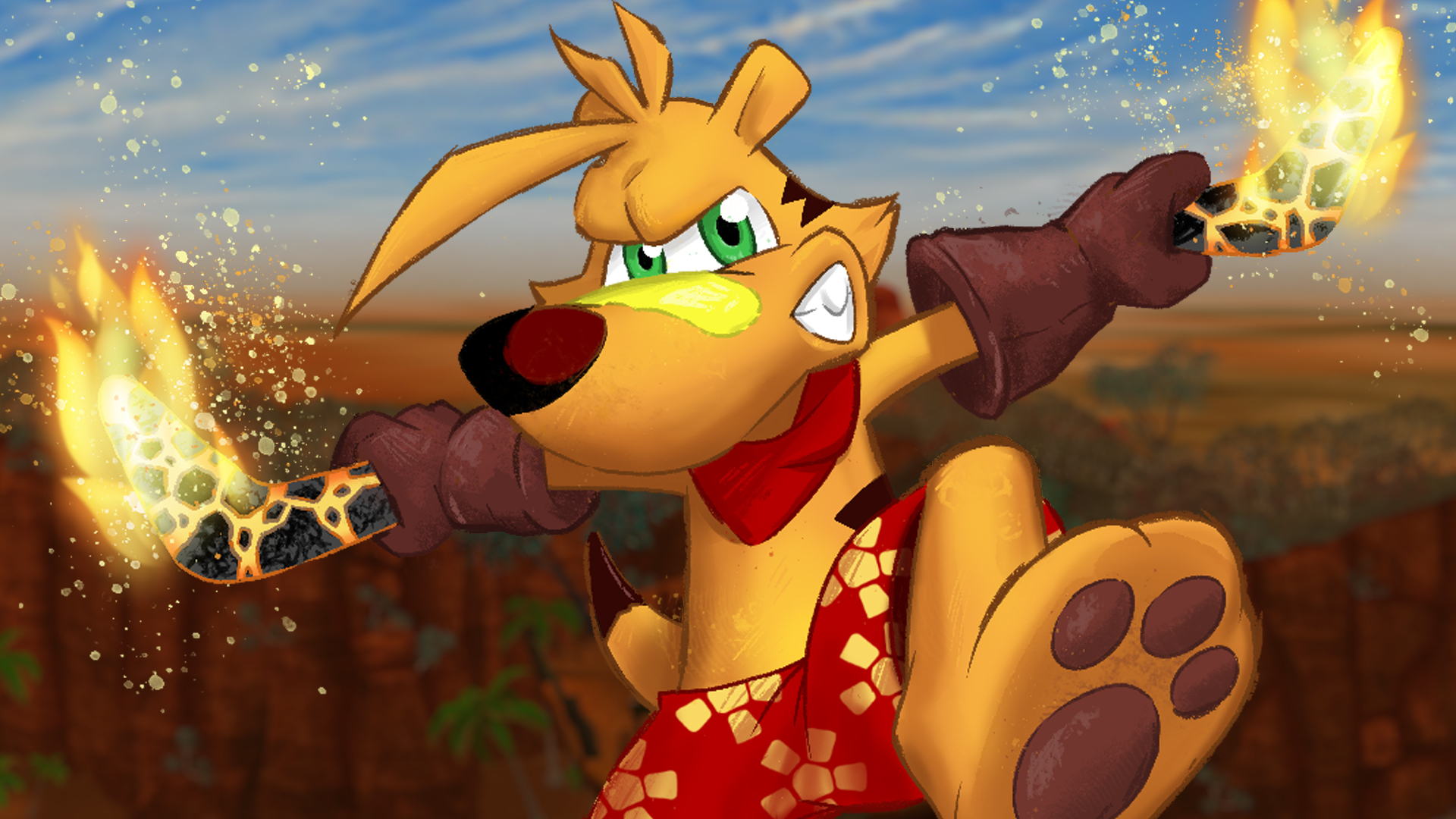Ty the Tasmanian Tiger, made and released during the halcyon early-2000s era of 3D mascot platformers, is nearly 20 years old. Other than the existential crisis about the passage of time this fact conjures, it’s a remarkable milestone for a series now re-entering the public sphere through HD remasters on modern platforms.
From Brisbane developer Krome Studios, the Ty series stars the eponymous extinct marsupial armed with power-infused boomerangs to defend his homeland. Steve Stamatiadis, Krome’s Creative Director and artist, has a rather unique way of describing the series, which was heavily influenced by Australian culture.
‘It’s a chill, fun, weird Australian thing: it’s the backyard barbie with cricket on a seminal summer,’ he said.
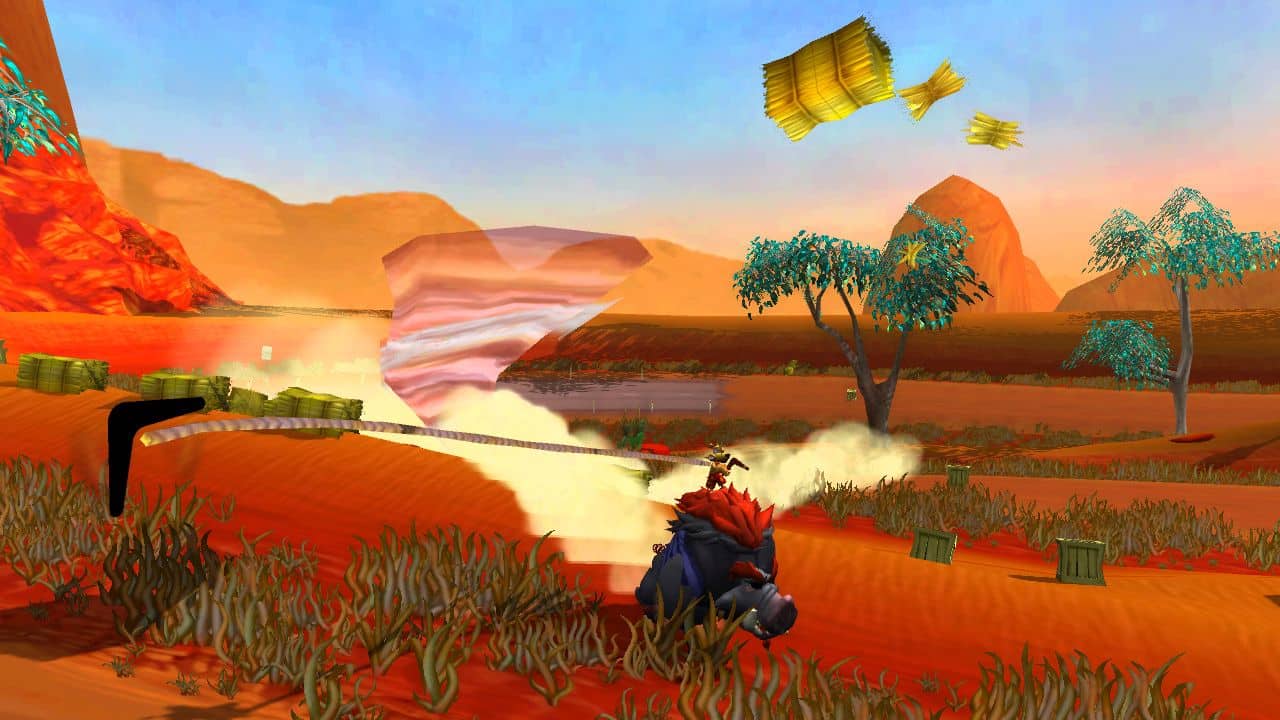
The origins of Ty
Krome was formed in 1999 after a handful of developers, including Stamatiadis and CEO Robert Walsh, enjoyed working together on a bodyboarding game, and formed a studio. They quickly built a reputation for being reliable, and accumulated clients quickly.
‘Publishers liked to work with us, we would get stuff done,’ Stamatiadis said. ‘We weren’t planning on getting big, ever, but it just kept growing because we were just doing things right.’
Read: The quest to make a truly Australian game
‘We got the games out on time – they might not have all been great, fantastic triple-A big-budget games, but they were consistent for the budgets we got, the timelines we got to make them, we were making good stuff that was solid.’
One of Krome’s earliest games was Barbie Beach Vacation for Windows PC, which prompted the team to look at making another woman-led title, a stealth-action adventure called Kat Burglar. It would seem they were ahead of their time, as there was minimal publisher interest in the concept, forcing Krome to abandon the project.
Despite the setback, a growing appetite for 3D platformer games led to the beginning of a new, Australian-born mascot. Around Christmas in the year 2000, Walsh returned from a trip to America and had been talking with a producer from Sony, who expressed interest in increasing the company’s platforming portfolio for the new PlayStation 2 console.
‘We were sitting on the couch going “well, if we’re going to do a platforming character, what should it be?”‘ Stamatiadis recalled. ‘It was pretty much unanimous: Tasmanian tiger.’

They named him Ty after Tyrone McAuley, one of the founders of New Zealand studio Sidhe Interactive (now known as PikPok), who Krome had worked with previously.
The idea for boomerangs as the protagonist’s main weapons quickly followed, and before long, there was interest in the diverse Australian setting not seen in many games up to that point.
Krome partnered with EA to publish what would become Ty the Tasmanian Tiger, a quintessentially Australian adventure filled with all manner of ockerisms, slang, and local references inspired by what the developers grew up with. This included callbacks to Aussie comedies like The Paul Hogan Show, Aunty Jack, and Working Dog’s The Late Show.
Part of the reason for Krome opting for a local setting was in response to Crash Bandicoot‘s pseudo-Australian setting dressed up with Mayan-like ruins, and a bandicoot that didn’t really look like a bandicoot.
‘I remember we had one meeting when the production guys from EA came over, we just sat around one night talking about all the Australian slang we knew, getting them up to speed and they loved it,’ Stamatiadis said. ‘That became our mission: to teach American kids – kids around the world – [about] Australianisms.’
To aid Krome’s vision of making the series’ writing and dialogue sound like a bunch of laid-back mates chatting at the pub, two main recording sessions were held: one in Melbourne, and another at EA’s overseas HQ. Several Australian actors were involved, including a spirited performance from late English-Australian actor Terry Gill as Maurie the wisecracking cockatoo companion.
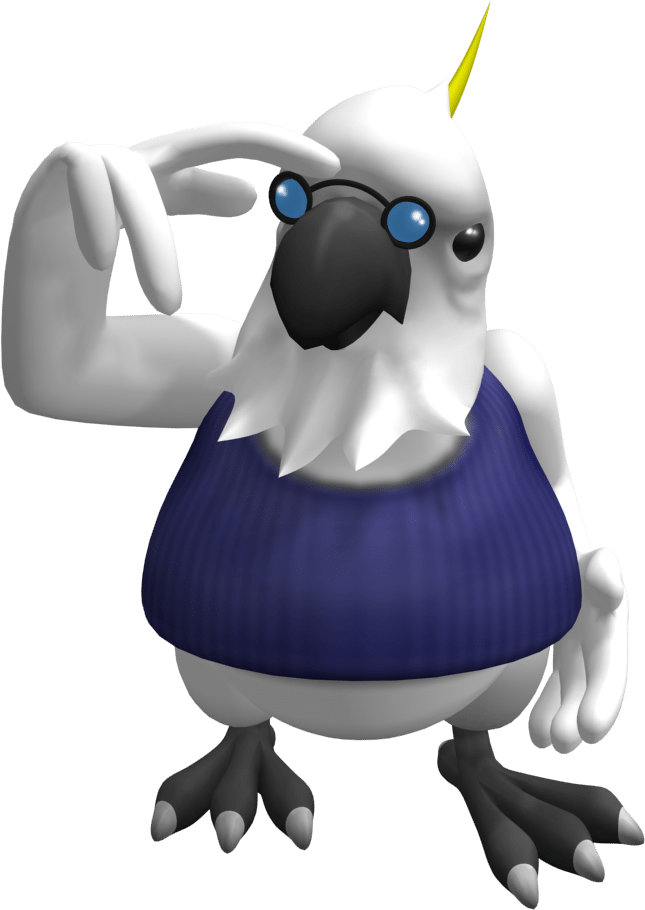
Although there was a bit of initial apprehension from EA over depicting snow in Australia, the overseas publisher embraced the local eccentricities Krome put forward. In fact, the only thing outright rubbished was an amusingly dark concept regarding the bilbies you rescue in-game.
‘There was this thing, [Ty] was going to eat the bilbies,’ Stamatiadis said. ‘For some reason, some dumb idea, he would eat stuff and there’d be an explosion of 3D bones.’
‘Yeah, that’s not gonna work as a family game,’ he recalled with a hint of humour.
Krome’s positive relationship with EA was so strong that the Doomerang – a late-game weapon controlled from a first-person view – was inspired by a suggestion from the company’s then-Chief Creative Officer, Bing Gordon.
As for the breadth of local flora and fauna depicted throughout the Ty series, Stamatiadis cited a book from the Queensland Museum as inspiration for filling the games with uniquely Australian animals like frilled-neck lizards and native crabs.
‘Once we started [development], I had this great book: Wildlife of Greater Brisbane, that we got from the museum,’ he said. ‘And it was just like, wow, I didn’t realise Brisbane had all this stuff!’
Ty the Tasmanian Tiger launched in late 2002 across PlayStation 2,
Krome built a strong reputation for contract work as well, working on various platform releases of famous franchises such as Viva Piñata, Spyro, and Star Wars. At its peak, Krome had close to 350 employees and contractors on the payroll.
Then the global financial crisis hit.
GFC ruin, recovery, and remastering
As a result of the global financial crisis in the late 2000s, and the subsequent weakening of the American dollar, it became unfeasible for overseas companies to continue Australian operations. Many studios shut down, and Krome was brought to its knees.
‘We were hanging on by a thread,’ Stamatiadis said. ‘For a couple of years, we started from scratch.’
‘We just built it up slowly. I think the second time around it was like “well, we don’t want to get big”. We’ve been there and it isn’t fun when you get that big because you are a big company and you stop doing the stuff you like doing in development.’
Opportunities eventually began to slowly materialise, including doing a Ty 2D platformer for Windows 8. After some time, the small Krome team – now roughly 20 people strong – decided to remaster the original trilogy for Steam, one game at a time. The remastering process involved various technical improvements, in addition to increasing the resolution of the visuals to HD standard and implementing new shaders to make everything look crisp.
There was one problem, however: several of the asset backups were lost.
‘We had all these backup plans, doing tape backups, there’d be regular weekly backups – all that stuff got lost,’ Stamatiadis said. ‘We did have source code, thankfully, that was a huge help because that would’ve been terrible trying to rewrite the whole game.’
Various environments, textures and character models were repainted by hand, which was no small feat. Fortunately, archives for the second Ty remained intact, and it was discovered to house many of the assets missing from the first game’s backup.
Krome launched the Ty the Tasmanian Tiger remaster through Steam’s Early Access program, which allows developers to publicly state the game is a work-in-progress. This allowed the team to solicit feedback from fans and integrate quality-of-life improvements along the way, such as a weapon wheel for the boomerangs, until it was feature-complete.
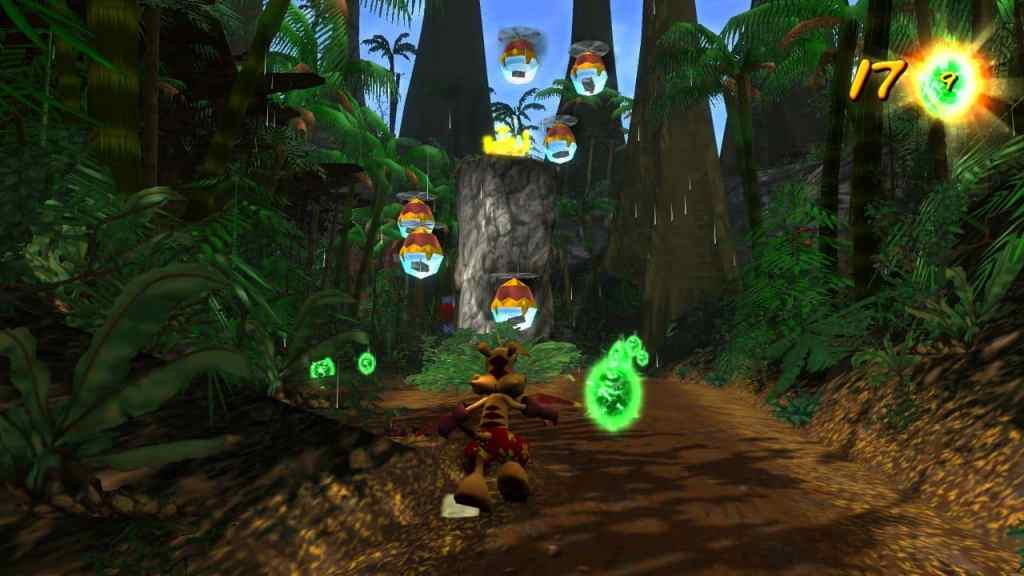
As of writing, the first Ty game displays an ‘Overwhelmingly Positive’ rating aggregate on Steam from over 2,000 reviews, with subsequent remasters also warmly received by the public.
While these games were in development, Krome also picked up work remastering old-school RPG classics including The Bard’s Tale Trilogy and Wasteland, forming a strong relationship with inXile Entertainment in the process.
Following the success of the Ty trilogy’s Steam remasters, Krome took to crowdfunding platform Kickstarter to raise additional funds and gauge community support for console versions.
‘I gotta say, I was gobsmacked to the response to [the Kickstarter campaigns],’ Stamatiadis said. ‘[It took] two days to get the funding – it wasn’t really ridiculous funding, but we wanted to make sure we got that money.’
‘Ty 2 was even more surprising, it was like “oh, let’s put it up there – oh, we’ve hit our goals and it’s not even lunchtime yet”. So there is support for the game. I think that was the bit – the money’s nice but the fact that people really like it and they’re willing to jump in and support us – that’s really cool. I’m happy about that.’
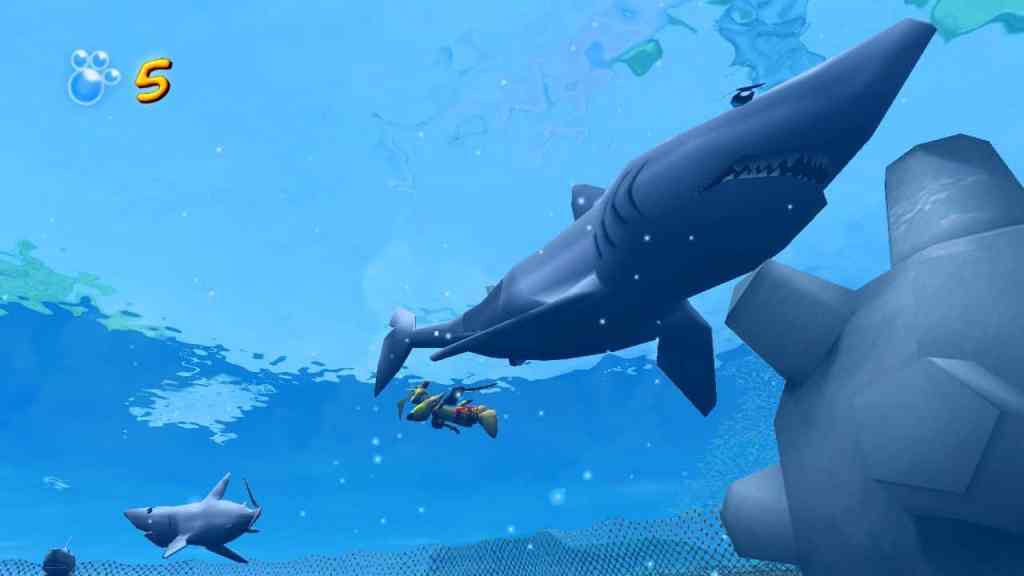
The Kickstarter campaign to bring the first Ty remaster to
Available digitally for a while, the first remaster is now getting a physical retail release – along with a special Switch version that includes a digital version of the second game.
When quizzed about why it was important to Krome to have a physical version, Stamatiadis quipped ‘I think we really wanted to have a
‘I’ve got a shelf full of all the physical releases of Ty – that’d be nice to have again. There are a lot of people that still won’t touch digital.’
He also takes a lot of pride in the retail cover art, remembering what happened with the original game’s release.
‘I’m a bit salty about the original Ty cover, Stamatiadis said. ‘I did the illustration for that, and they got a guy to paint over it to make it more 3D.’
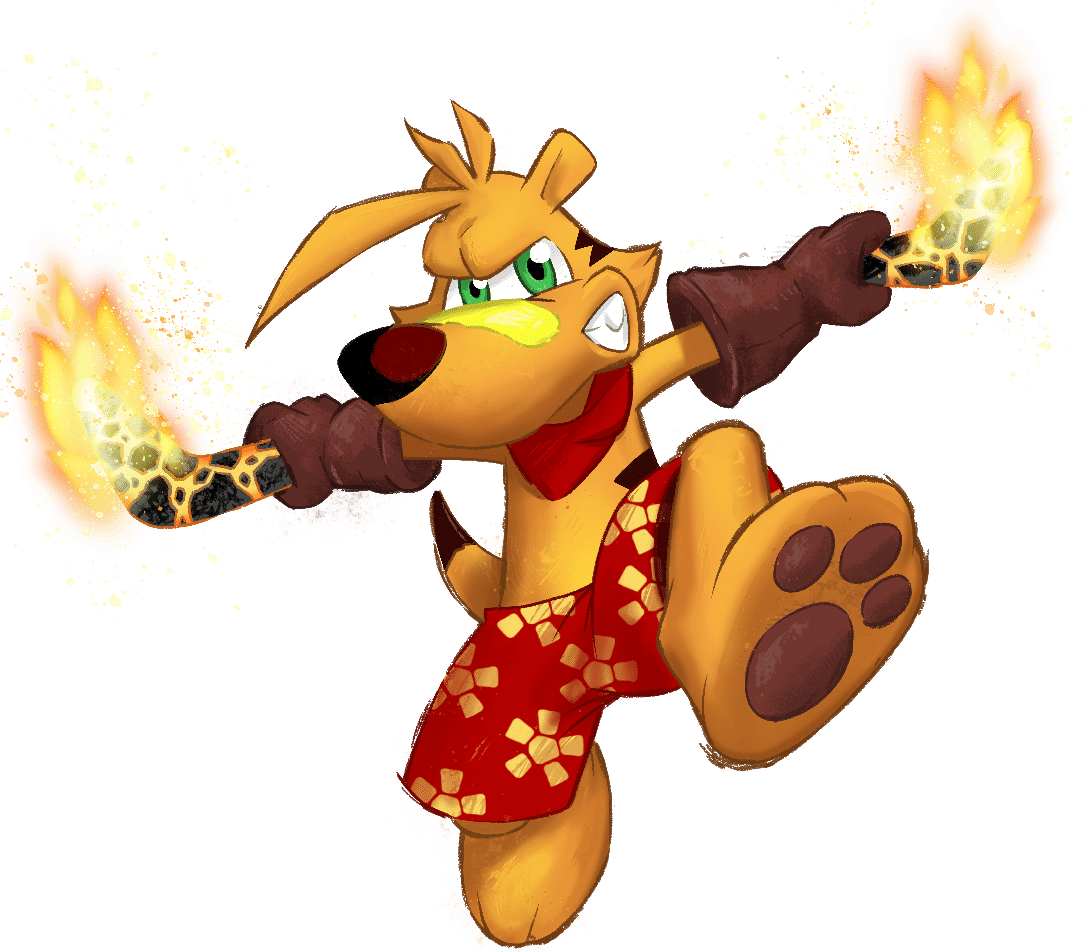
‘[If I was told] to do that, I wouldn’t have worried about doing all the painting stuff and doing this rush job [I was asked to do in a week].’
‘This one’s my cover!’
When talking about the Ty series, Stamatiadis became contemplative, reflecting on his career to date.
‘You’ll always be remembered for the thing that you don’t expect to be remembered for,’ he said. ‘The one thing you don’t think is going to be “the big thing” you do, is the thing that’s the big thing you do in life. I wanted to do this cool anime sci-fi stuff – normally that’s my thing.’
‘I didn’t expect I was going to be [working on Ty for so many years]. I’m glad I’m doing it, it’s a lot of fun.’
Support for the local industry
The Queensland State Government recently unveiled plans to expand its Post-Production, Digital and Visual Effects (PDV) Offset to include game development, with a 15% tax rebate for productions of $250,000 and higher. Stamatiadis is a strong supporter of the move, although he conceded it’s taken a long time to get to this point.
‘This is stuff we were pushing for 30 years ago when we first started talking to the government back then,’ Stamatiadis said. ‘We joke about if games were dug out of the ground [the government would’ve given money] a long time ago.’
Read: Queensland introduces 15% tax rebate for game developers
He added the best way to support Australia’s growing video game industry is to provide more support and opportunities to smaller developers and startups, like what Krome was in the beginning.
‘Some sort of help to actually get local small developers talking to big publishers is a good thing,’ Stamatiadis said. ‘EA, Activision, Ubisoft or
‘All the stuff that we’ve ever done that’s big is basically from people [we] met or dealt with, or worked with previously. There’s so many guys in Brisbane who started out – Krome was one of their first gigs. While we might’ve fallen apart because of the financial crisis, it did spawn off a lot of other people to make small stuff and do their own thing. I think it’s like a tree burning down in the forest. The bushfire starts up a whole new round of growth.’
With more government support, it’s hoped more developers will get the opportunity to leave their own lasting legacies on the Australian video games scene.
Ty the Tasmanian Tiger HD is out now on digital platforms, with physical retail copies available on
